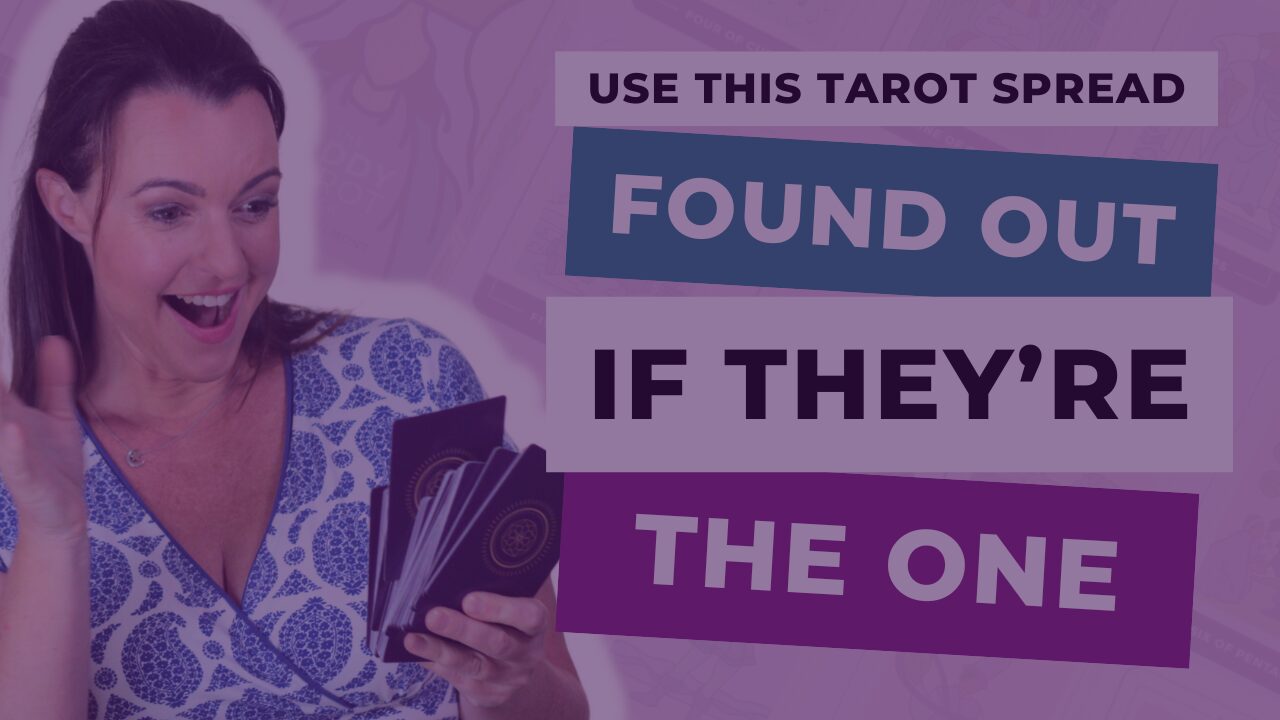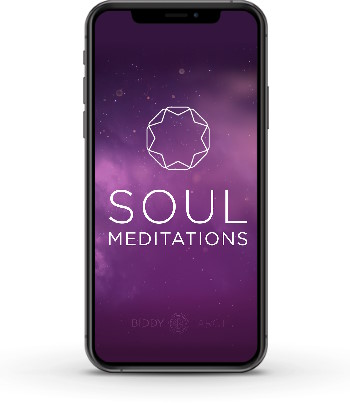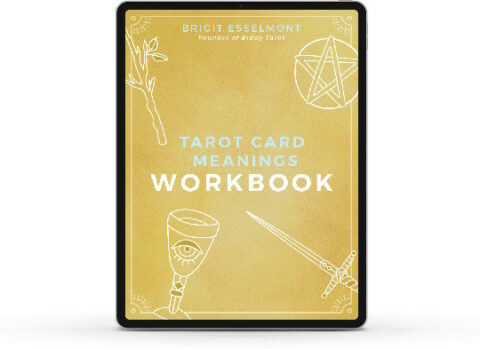
Court Cards in the Tarot are often the most complex and confusing cards to interpret. Why? Because there are so many different ways to interpret them – as people, as personalities, as situations, and more.
In this post, I show you the different ways to read the Court Cards and share some tips on how to know which method to use when.
Court Cards As Specific People
Most often, Court Cards represent a person. That person can be either yourself or someone else. By understanding the personality and attributes of the card, you can pinpoint whether it is yourself or someone else represented by that card.
Court Cards primarily reflect personality traits and characteristics. They provide clues as to how a person thinks, feels and acts, and what truly motivates them.
The Court Cards have often been linked to the Myers-Briggs Personality Trait Indicator (MBTI). Myer-Briggs is based around the theories and ideas of Carl Jung and is now a very well-respected method of gaining a deeper understanding about personality types and motivational factors.
According to the MBTI tests, there are 16 different Personality Types. Interestingly, this corresponds to the 16 Court Cards in the Tarot.
If you have worked with MBTI before, you may like to draw your own conclusions about which MBTI profile fits with each of the Court Cards and note it in your Tarot Journal. At this stage, there is no single universal system of correspondences between the 16 court cards and the 16 MBTI types.
In more traditional Tarot books, Court Cards are also given physical attributes such as hair and eye colour, gender and age (e.g. male, brown hair, blue eyes, attractive, mature, etc.). However, in my experience, I find that this is very limiting and often inaccurate. Many times, Queens come up for men, Kings come up for women, Pages come up for older people and so forth.
Connecting With the Court Card Personalities
It's a great idea to develop your own connection with each of the Court Cards and decide which attributes they represent for you. Here are two fun and engaging techniques you can use to learn and connect with the Court Card personalities:
Technique #1: Put a face to a name
Lay out all of the Tarot court cards in front of you. Now pick one up and think of someone you know who is just like that card. It might be a friend, family member, colleague, acquaintance, or even a celebrity. Write down a few sentences about that person and how their personality relates to the card.
Work through each Court card until you have 16 real people that you can relate to whenever you see the court cards come up in a reading.
Technique #2: Go speed-dating with the cards
Again, separate your court cards from the rest of the cards. Randomly choose two and put them side-by-side. Now imagine you’re at a speed dating event and these two court cards meet. What would they say to each other? Would there be some chemistry? Write down the conversation, exactly as you imagine it.
Now draw another two cards and create a new conversation. Rinse and repeat.
Soon, you’ll have a sense of not only the personalities of each card but also how the court cards relate with one another.
Wish You Had A Tarot Card Meaning Cheat Sheet?
Get Your FREE Tarot Card
Meanings Reference Guide
And Avoid Getting Stuck When Trying To Remember The Card Meanings

Court Cards As a Part of Yourself
Sometimes, the Court Card may indicate a part of yourself, rather than your complete personality. It shows a side of yourself that is being expressed or is seeking expression. It may be part of you that you draw upon regularly, or that you need to nurture and develop.
For example, the appearance of the Page of Swords in a career reading may indicate that you need to adopt a more curious mindset to be successful. Or, if you have already been asking questions, its appearance confirms that you’re doing everything you need.
Court Cards As a Situation or Event
However, there are times when it just doesn’t make sense for the Court Card to represent a person or part of their personality. Thus, sometimes Court Cards can represent a situation or an event that takes on a personality of its own. For example, the appearance of the Page of Cups often indicates an invitation or an offer that brings a lot of joy and excitement. Or the King of Wands suggests a situation where you are maturing your goals and visions in life.
Court Cards As a Level of Maturity
In addition to Court Cards representing people, personalities or situations, they also represent different levels of maturity.
From a personal perspective, maturity can allude to the age of the person in question, but it is usually more insightful to look at maturity as a mindset. For example, the Page, who is often viewed as a young, immature person, doesn’t have to be under the age of 21, but may indicate someone who is young at heart, naive, or unfamiliar with a particular situation.
Maturity level can also point to the various stages of a journey. The Page represents the start of a journey, while the King represents the conclusion of a journey, complete with life lessons and a deep understanding.
How to Know What Interpretation to Use and When
With so many different ways to interpret the Court Cards, no wonder many Tarot students struggle with these cards. So, how do you know which method to use and when?
Here are a few tips:
- Before you start your reading, determine whether or not you want the Court Cards to symbolise people, personality traits or situations.
- Use your intuition. Listen out for your inner voice to guide you in the right direction.
- List out possible interpretations for the Court Card as a person, personality and situation. Select the interpretation that makes the most sense in the reading.
I also asked the Biddy Tarot Community how they interpreted the Court Cards in a reading. Here are a few different approaches:
“Sometimes I see them as the emotions they represent or the level of understanding of a situation. More often I see the Page and the Knight more as possible events, like a homecoming, moving, or a message.”
“Personally, the Court Cards represent people, without fail! I have given myself goose bumps from the accuracy!”
“I usually try to match it to a person. If I can't find a person who matches I try to take on the attributes of the card.”
“The querent's question or which spread I am using, clues me in to whether it is a person, trait, or an energy. Overall, I trust my intuition.”
I hope this has given you some inspiration and new tools to get to know the Court Cards and feel confident with them in your readings.
If you’ve been searching for a way to Master the Court Cards once and for all, then join me in the Biddy Tarot Community where you'll receive immediate access to two Court Card Masterclasses, a recorded Q&A sesh with me, and six Bonus Resources all about those pesky Pages, Knights, Kings and Queens – Join the Biddy Tarot Community today!






 Harness the wisdom of the Major Arcana with 22 guided meditations. Here’s what you’ll get:
Harness the wisdom of the Major Arcana with 22 guided meditations. Here’s what you’ll get: Start doing deep, accurate readings TODAY with this step-by-step accelerated program for beginners.
Start doing deep, accurate readings TODAY with this step-by-step accelerated program for beginners. Here’s what you’ll find inside for every card in the deck:
Here’s what you’ll find inside for every card in the deck: Create a deeply intuitive and personal connection to the Tarot cards with your very own Tarot Card Meanings Workbook. Here’s what you’ll find inside the workbook:
Create a deeply intuitive and personal connection to the Tarot cards with your very own Tarot Card Meanings Workbook. Here’s what you’ll find inside the workbook: